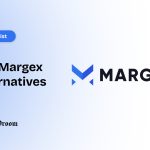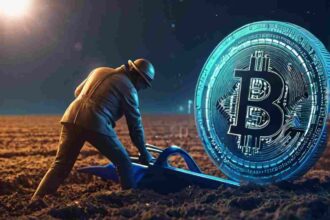In the sense of ownership, traditional finance entities have found a hedge fund backed by an on-chain technology to take ownership of their tangible assets. From this the idea of real world asset tokenization, which is generating new avenues to boost investment income while unleashing liquidity to traditional assets has been born. This has been achieved through Blockchain technology which has become an agent of revolution in the real world, cutting across all aspects of life.
On average, the real-world asset market is projected to be worth $16 trillion by 2030 according to research by Binance. This presents an enormous chance for blockchain technology to tokenize these assets. Real world asset tokenization refers to transforming physical assets into digital tokens which can be traded on a blockchain. This allows trading of the assets directly between two persons or fractioning them for purchase by several individuals.
What Are Real World Asset Tokenization?
Real-world assets (RWAs) are tangible or intangible tokens that constitute traditional financial holdings. They constitute tangible assets such as arts, real estate, precious metals or intangible assets such as government bonds and carbon credits.
Real-world assets also can be represented by security tokens in the case where these assets operate and are controlled by administrators offline. For example, a bond can be issued as a token on a blockchain network or held offline. If supported by traditional assets, RWAs may bring stiff competition between traditional and decentralized finances in the monetary industry. This is because they offer reliable and efficient digital assets.
What Is Real World Asset Tokenization and How Does It Work?
Let’s say you could possess a precious stone, a skyscraper, or an eminent artwork, that could be incredible right? Unfortunately, most of us cannot bear the enormous sums associated with these assets. But what if you could own ‘’shares’’ of these fractionated assets? Well, this is the ideology behind real-world asset tokenization.
Real world asset tokenization entails transforming real-world assets into tokens that can be traded online on a blockchain network.
Let’s imagine an artist wants to generate money from a painting to help him/her make more masterpieces. First, the artist must look for an organization to create digital tokens to represent this painting’s ownership. This involves slicing the painting into different fractions and placing a badge with a value on each, which now becomes a token.
Once the tokens are available and valued, they are linked to the real thing (in our case the painting) using a smart contract. A smart contract is a self-executing program that is executed once the set conditions are met. After this, the tokens can now be sold, bought, or traded with other tokens on the internet using a platform that connects both parties.
What Real World Assets Can Be Tokenized?
Technology is adopted in predictable phases and Web3 has emerged as a revolutionist of technology. This new wave has been successful in installing an array of technologies with limitless possibilities for economic development.
As BlackRock CEO Lary Fink said, the next generation of assets and securities will be tokenization of securities. This has seen traditional banking giants such as BlackRock in cooperation with RWA startups such as Polymath and Tzero utilize blockchain in Web3 to tokenize assets truly complying with the real world.
Some of the real-world assets frequently tokenized include:
Art
Through tokenization paintings such as Marilyn painting, Picasso, and Andy Warhol paintings can be fractionalized into shares to allow anyone a chance to own them.
Real estate
The deed for ownership of a house, land, or property can be put on-chain to allow purchase by multiple people through fractionalization.
To understand what real estate tokenization is, read this article.
Precious metals
This includes rare and beautiful gemstones such as diamond and gold.
Stocks
One can own shares in a company either government-owned or private.
How Are Real World Assets Used in Decentralized Finance (DeFi)
Over the years real-world assets(RWAs) have experienced an increasing acquisition and total value lock in DeFi protocols. These assets have become influential drivers transforming the financial landscape by opening up access to various asset categories.
Real world asset tokenization Total Value Lock(TVL) rankings in DeFi protocols
DeFi ecosystem has experienced different categories of real-world assets:
Equities and Real Assets
This context of real-world assets mostly entails stablecoins. These are cryptocurrencies built to have relatively stable prices, typically by being linked to a commodity or a fiat currency or having an algorithm-regulated value. They offer security to owners during market volatility, preventing their exit from the ecosystem.
Apart from stablecoins, so far real estate, carbon credits, and public bonds are mostly used as real assets in the real-world assets. Adoption of these backed tokens has been limited due to the diversity of the off-chain elements and unfavorable regulations surrounding the public market.
Fixed income
Fractionalization of real-world assets eliminates the entry barrier limiting potential inventors. With this, DeFi has evolved to a new market charisma, as private investors reviving the DeFi ecosystem have an investment opportunity. This has seen a rise in private credit offerings in DeFi to over $4 billion.
Fixed income income in the DeFi ecosystem is divided into private and public credit. Public credit refers to a market of openly traded security debts provided by governments such as government bonds. On the other hand, private credit is a debt market provided by non-governmental legal organizations or individuals such as commercial bonds.
Private credit lacks liquidity as compared to public credit since its ownership is limited to a certain class of investors who can access the market. This classifies them further into asset-backed private credit which allows borrowing through over-collateralization and unsecured private credit, though rare in DeFi currently.
Given that these assets exist offline, tokenizing them bridges the gap between decentralized finance and traditional finance, allowing yield within DeFi projects.
Benefits of Real World Assets Tokenization
- Exceptional investment opportunities, due to fractionation which allow even those with lower incomes to possess valued assets.
- Market efficiency, due to the elimination of intermediaries which makes it easier for anyone to sell or buy actual items on the blockchain.
- Access to liquidity due to fractionation which is rare in traditional markets.
- Capital acquisition by use of the DeFi ecosystem.
- Low transaction costs due to the smart contracts acquisition which provides a smooth transaction.
Conclusion
With blockchain as the dominion, real world asset tokenization provides an innovative way to invest in high-value commodities building a new world of asset ownership. This journey towards new digital asset ownership is thrilling as not only is it efficient and accessible but it is also affordable by everyone. Though new and still facing challenges in regulatory compliance and standardization, the future of real-world asset ownership lies in tokenizing them.




















